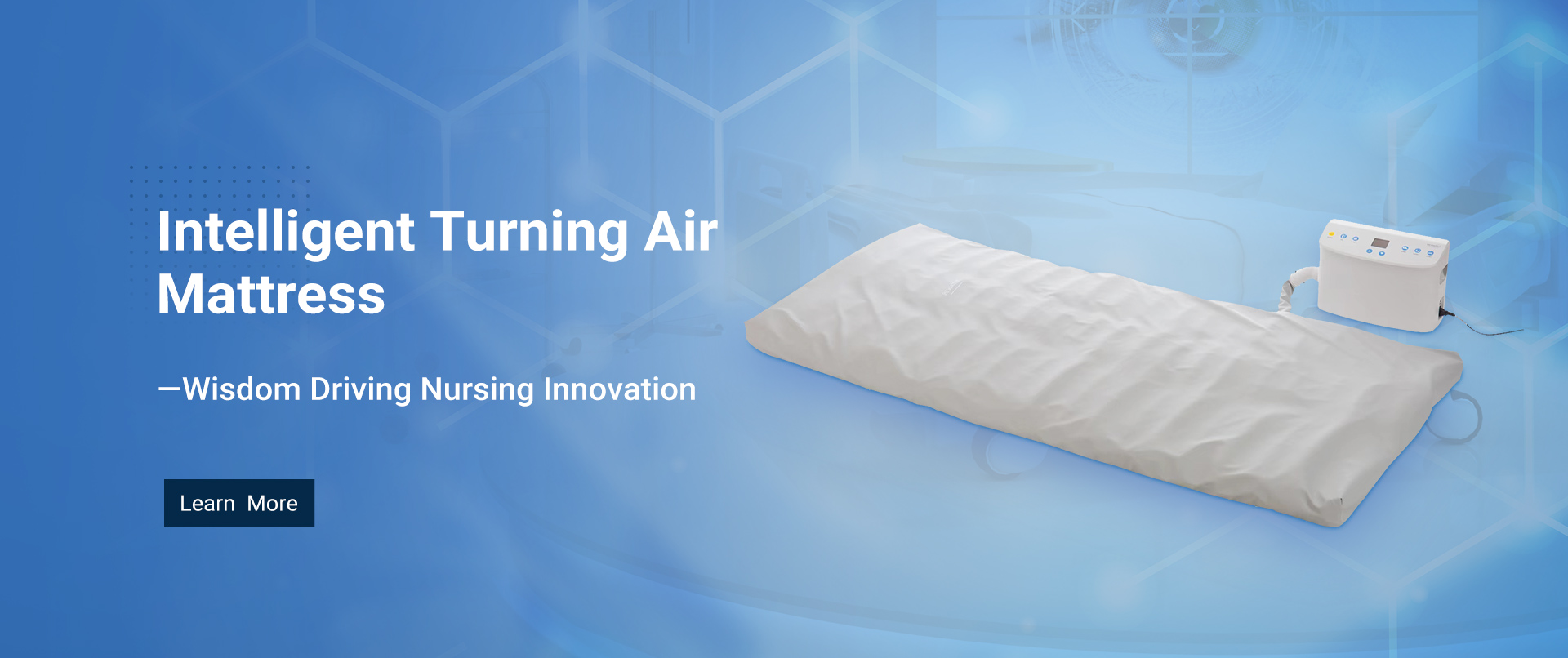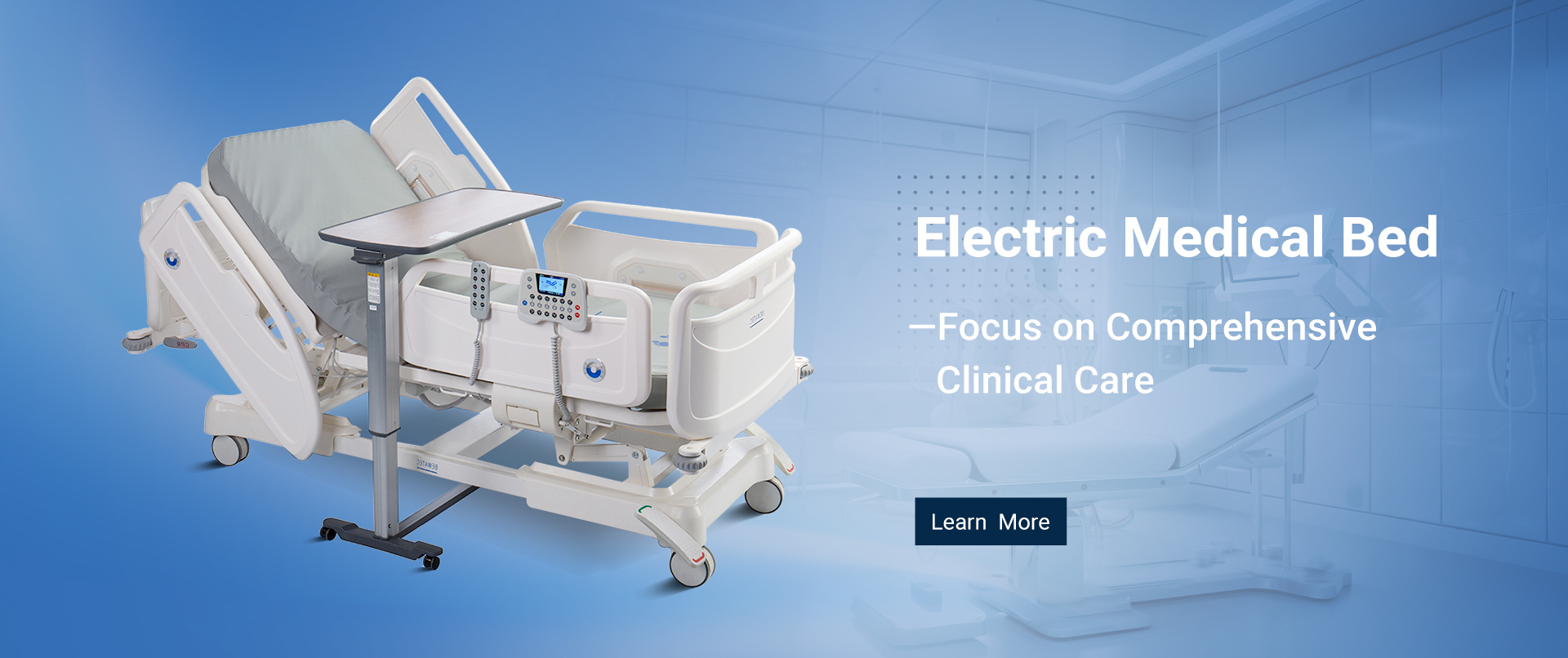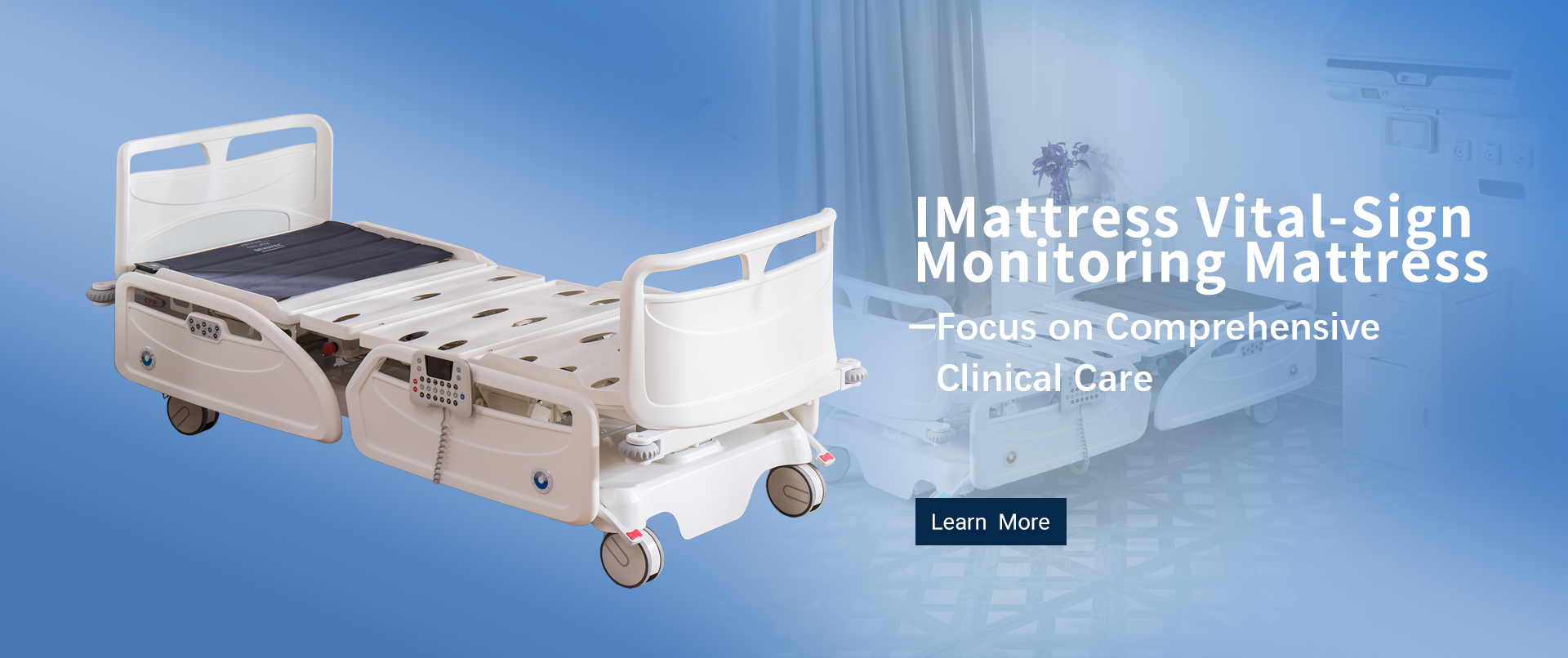
How to Leverage Wifi and 4G5G for Innovative Health Monitoring Systems
Table of Contents
- The Rise of Wireless Technologies in Health Monitoring: A Data-Driven Overview
- Key Statistics on Global 4G and 5G Adoption and Its Impact on Healthcare
- Integrating WiFi with Wearable Health Devices: A New Frontier in Patient Monitoring
- How IoT and Wireless Connectivity are Revolutionizing Remote Patient Care
- Case Studies: Successful Implementation of Wifi and 5G in Health Systems
- Future Trends: The Role of Advanced Connectivity in Shaping Telemedicine Solutions
- Maximize Patient Care: The Importance of Reliable IV Drip Stands in Healthcare Settings
- FAQS
- Conclusion
- Related Posts
 Hey there! These days, with healthcare advancing so rapidly, we're seeing some pretty exciting changes—especially with how Wifi and 4G/5G tech are totally transforming health monitoring. It’s like a whole new world for patient care. I read somewhere, like a report from the International Telecommunication Union, that the global market for connected health systems could hit around $100 billion by 2025. Crazy, right? It just shows how much more people are really jumping into digital health solutions now.
Hey there! These days, with healthcare advancing so rapidly, we're seeing some pretty exciting changes—especially with how Wifi and 4G/5G tech are totally transforming health monitoring. It’s like a whole new world for patient care. I read somewhere, like a report from the International Telecommunication Union, that the global market for connected health systems could hit around $100 billion by 2025. Crazy, right? It just shows how much more people are really jumping into digital health solutions now.
Bewatec (Zhejiang) Medical Device Co., Ltd. is really leading the charge here, focusing on smart medical tech and pushing the digital transformation of healthcare. By using Wifi and 4G/5G connected monitoring solutions, their goal is to make digital health journeys that are comfy, safe, and tailored personally for each patient. It’s all about solidifying their position as a global leader in complete smart medical care solutions.
In this blog, I’ll share some cool strategies on how these tech advances can help improve health outcomes and make things run smoother in medical settings. Exciting stuff ahead!
The Rise of Wireless Technologies in Health Monitoring: A Data-Driven Overview
You know, with wireless tech like Wifi and 4G/5G becoming more common, health monitoring systems have honestly been turned on their head. It’s like everything is more connected now, which means healthcare can be more responsive and real-time than ever before. As these techs keep improving, they let us gather and share important health info instantly—whether you're wearing a fitness tracker or using a health app on your phone. This quick data transfer really helps with managing chronic conditions and catching health issues early on.
And it’s not just about the tech—it's also changing how people get involved with their health. Thanks to super-smart analytics and AI, healthcare providers can dig deeper into the data that wearable devices and apps collect. That means more personalized care, and patients feeling a bit more in control of their health. The fact that Wifi and 4G/5G keep everything connected makes it super easy to check on vital signs, sticking to meds, and overall wellness, all in real time. All of this adds up to better health results — it’s pretty exciting, really.
Key Statistics on Global 4G and 5G Adoption and Its Impact on Healthcare
You know, the way 4G and 5G networks are catching on around the world is really shaking things up in healthcare. It's not just tech for tech’s sake—they’re actually making it possible to keep a closer eye on people’s health, and that means better care overall. As more countries roll out these super-fast networks, healthcare providers can tap into real-time data from wearables and telehealth tools, which not only helps patients get more personalized care but also makes clinics run smoother. Honestly, it’s exciting to see how investing in stronger infrastructure is paving the way for remote monitoring, reducing the load on hospitals and clinics.
And if you think about it, Wi-Fi, along with 4G and 5G, plays a huge part in making all these smart health solutions possible. They’re enabling continuous health tracking, so issues can be caught early instead of waiting for things to get worse. For example, folks living with chronic illnesses can get regular updates on their health, which means they might end up in the hospital less often—and manage their conditions better. It’s pretty clear that as telecommunications and healthcare come together more than ever, we have a real shot at engaging patients more deeply and improving public health overall.
How to Leverage Wifi and 4G5G for Innovative Health Monitoring Systems - Key Statistics on Global 4G and 5G Adoption and Its Impact on Healthcare
| Region | 4G Adoption Rate | 5G Adoption Rate | Impact on Telehealth Services (%) | Smart Device Penetration (%) |
|---|---|---|---|---|
| North America | 95% | 30% | 75% | 85% |
| Europe | 90% | 25% | 70% | 80% |
| Asia Pacific | 80% | 20% | 65% | 75% |
| Latin America | 70% | 15% | 60% | 65% |
| Middle East & Africa | 60% | 10% | 50% | 55% |
Integrating WiFi with Wearable Health Devices: A New Frontier in Patient Monitoring
You know, the whole combo of WiFi and wearable health gadgets is actually a big game-changer in how we monitor patients. Since WiFi’s pretty much everywhere these days, healthcare pros can tap into real-time data from their patients without much hassle. The wearables—those little devices with sensors—can track stuff like heart rate, blood pressure, blood sugar, and more, then send that info over WiFi smoothly. This setup means medical folks can keep an eye on patients’ health all the time, no more relying only on old-school checkups. It’s a huge step forward for better care and catching trouble early.
Plus, when you combine WiFi with these gadgets, it becomes super easy to keep tabs on folks remotely. Patients can handle their health at home, which is way more convenient than always rushing to the doctor. And it actually helps reduce the number of in-person visits, easing the load on clinics and hospitals. With alerts and notifications set up from the real-time data, doctors can jump in quickly if something seems off, which totally changes how we deal with chronic illnesses. All in all, this combo of WiFi and wearables is pushing healthcare into a more connected and efficient future—making things better for everyone involved.

How IoT and Wireless Connectivity are Revolutionizing Remote Patient Care
You know, the whole integration of IoT and wireless tech is really turning the way we take care of patients from a distance upside down. With faster WiFi and 4G/5G networks getting better all the time, there are now loads of cool new ways to keep tabs on health remotely. I read somewhere that, according to Grand View Research, the global telehealth scene is expected to hit around $560 billion by 2027 — that's huge! And it’s growing at a crazy rate of over 37% annually since 2020. The main driver behind this boom? The surge in demand for remote patient monitoring, which basically means healthcare pros can send help and updates without needing to see folks face-to-face all the time. It’s a total game-changer for managing chronic conditions and providing real-time care.
Wireless connectivity is totally at the heart of this shift. With 5G rolling out, the low lag and lightning-fast data transfer let devices and doctors chat smoothly without hiccups. A study by Accenture even found that about 83% of people are willing to try telehealth if it means they can keep an eye on their health from home. Thanks to things like smart wearables and IoT gadgets, users can share stuff like their heart rates, blood sugar levels, or sleep habits directly with their doctors — all remotely. It makes it so much easier for clinicians to make good decisions without all the fuss of traditional visits. Honestly, it’s pretty exciting to see how tech is making healthcare more accessible and personalized for everyone.
Case Studies: Successful Implementation of Wifi and 5G in Health Systems
You know, the way WiFi and 5G are being integrated into health monitoring systems is really changing the game when it comes to patient care. I’ve read some case studies showing hospitals actually rolling out these techs successfully—making real-time monitoring and data management a whole lot smoother. One pretty impressive example? A big healthcare center that set up 5G networks to connect wearable health devices. This meant they could keep an eye on vital signs nonstop, and if anything looked off, alerts would go off immediately. So, patients got quicker responses, which is a total win.
Oh, and here’s a quick tip—when you’re thinking about bringing WiFi or 5G into healthcare settings, don’t forget about security. It’s super important to make sure all the data being transmitted is encrypted and follows health privacy rules. Nobody wants patient info leaking out!

And here’s another tip—if you want WiFi and 5G to really work well in health systems, put some focus into building solid infrastructure and training staff properly. When healthcare workers know how to use these tools right, they can provide even better care and have more meaningful interactions with patients.
Future Trends: The Role of Advanced Connectivity in Shaping Telemedicine Solutions
Lately, the rapid advancements in connectivity tech like Wi-Fi and 4G/5G are really shaking up how we do telemedicine. It’s opening doors to all kinds of cool health monitoring gadgets and systems. As more folks and providers jump on the remote health bandwagon, the integration of these faster, smarter connections means data gets transmitted in real-time, making healthcare more accessible and responsive. It’s pretty exciting to see how everyone’s shifting towards remote diagnostics — everything's syncing up with these tech improvements, making the whole process smoother and more efficient.
And then there's the Internet of Things (IoT), which is pretty much set to transform healthcare as we know it. Analysts say we’ll see huge growth in this area by 2032. This boost in connectivity isn’t just about fancy wearables or neat medical carts; it’s also about constant, connected monitoring through smart devices all working together. With the market for IoT expanding yearly and wireless tech getting better all the time, healthcare systems are likely to rely more and more on these networks. The goal? Giving patients faster, smarter, and more personalized care — and honestly, that’s gonna make a real difference in how telemedicine evolves over the next few years.
Maximize Patient Care: The Importance of Reliable IV Drip Stands in Healthcare Settings
In the fast-paced environment of healthcare settings, maximizing patient care is of utmost importance. One often overlooked yet vital component in delivering effective treatment is the reliability of IV drip stands. These stands are not merely equipment but essential tools that facilitate the smooth administration of fluids and medications to patients. The importance of dependable IV drip stands cannot be understated; they ensure that healthcare providers can focus on what matters most—providing quality patient care.
With a focus on maximizing convenience, the latest IV drip stands come with simple installations and user-friendly designs. This ease of use allows medical staff to quickly set up and adjust the stands as needed, leading to a more efficient workflow. When healthcare professionals can quickly and effortlessly manage IV drips, patients receive timely treatments, reducing wait times and fostering a supportive environment for recovery. The integration of reliable IV drip stands promotes better patient outcomes by allowing caregivers to dedicate more time to direct patient interactions rather than wrestling with equipment.
Moreover, the innovative designs of modern IV drip stands are tailored to enhance the overall care process. These stands are built to accommodate various needs, ensuring that fluids and medications are delivered accurately and safely. The convenience they provide means that healthcare providers can easily customize the setup based on individual patient requirements. By investing in high-quality, dependable IV drip stands, healthcare facilities can significantly improve the standard of care delivered, reaffirming their commitment to patient well-being.
FAQS
: Wireless technologies have revolutionized health monitoring by enabling real-time collection and transmission of health data, improving the effectiveness of condition monitoring for both patients and healthcare providers.
Wearable health devices, equipped with sensors to monitor vital signs, can transmit data through WiFi networks, allowing healthcare providers to access real-time information and make informed decisions quickly.
Remote patient monitoring empowers individuals to manage their health from home, enhances convenience, and reduces the need for in-person visits to healthcare facilities.
Integration of advanced analytics and artificial intelligence allows healthcare professionals to gain deeper insights from collected data, leading to personalized care and empowering patients to actively manage their health.
IoT devices, combined with wireless connectivity, facilitate innovative health monitoring systems, allowing healthcare providers to deliver real-time services and manage chronic conditions effectively.
The telehealth market is projected to reach $559.52 billion by 2027, growing at a CAGR of 37.7% from 2020, driven by increasing demand for remote patient monitoring solutions.
5G technology provides ultra-low latency and high data transmission speeds, enabling seamless communication between devices and healthcare professionals, enhancing the efficiency of telehealth services.
Patients can share vital health data such as heart rates, glucose levels, and sleep patterns remotely, helping clinicians make informed decisions without relying on traditional in-person consultations.
Continuous tracking through wireless devices leads to improved outcomes and proactive interventions by enabling healthcare providers to set up alerts and notifications based on real-time data analysis.
The synergy between WiFi and wearable technology allows for improved monitoring and timely interventions, fundamentally transforming the approach to chronic disease management.
Conclusion
You know, the way Wifi and 4G/5G connected health monitoring tools are changing healthcare is pretty fascinating. As wireless tech keeps getting better and more widespread, we’re seeing a real shift toward using data to make patient care smarter and more personalized. With 4G and 5G becoming the norm around the world, healthcare providers now have the chance to use these advancements to build cool new monitoring systems that gather and analyze data in real-time—basically, giving patients better outcomes and more proactive care.
Plus, when you combine Wifi with wearable health gadgets, it’s like creating a seamless environment for keeping tabs on patients at all times. It’s an exciting new chapter in health tech, especially since it’s supporting the whole remote care movement. At Bewatec (Zhejiang) Medical Device Co., Ltd., we’re all in on that mission—to deliver customized digital healthcare experiences. If you look at the successful case studies and think about where this tech is headed, it’s pretty clear that embracing these advanced connectivity options is going to be a game-changer for the future of telemedicine and healthcare in general.
Related Posts
-

Leading the Charge: China’s Premier Digital Health Monitoring Innovations for Global Markets
-

2025 Trends: The Ultimate Connected Health Monitoring Solutions for Wifi and 4/5G
-

Mastering Best Personalized Care: A Comprehensive Guide to Meeting Global Procurement Standards
-

How to Choose the Right Medical Bed Manufacturer for Your Needs
-

Unlocking Comfort: Benefits of the Best Patient Bed for Enhanced Recovery
-

5 Key Factors Driving the Growth of Best Hospital Bed Manufacturers in China









